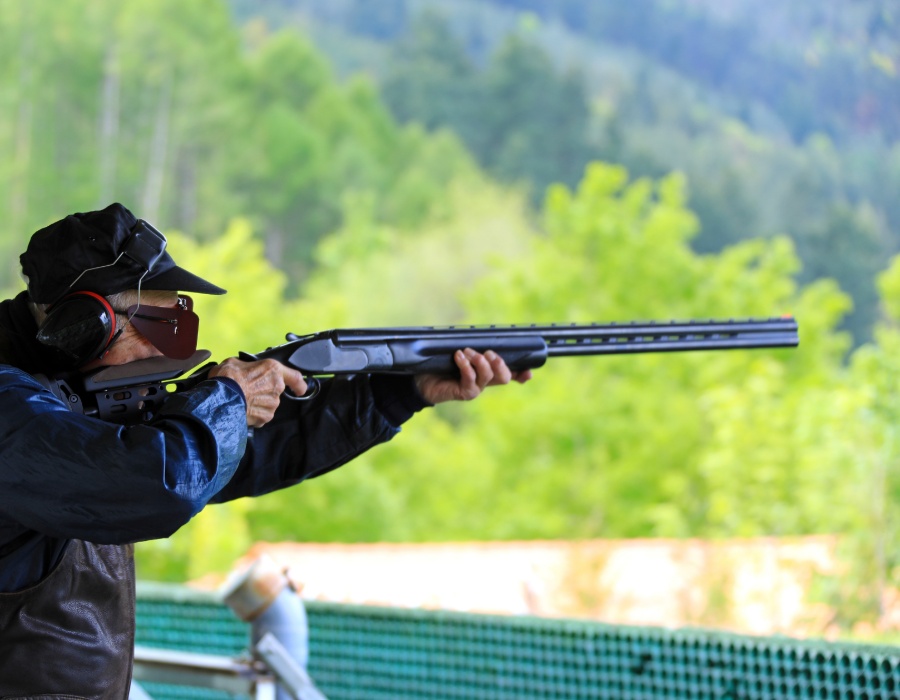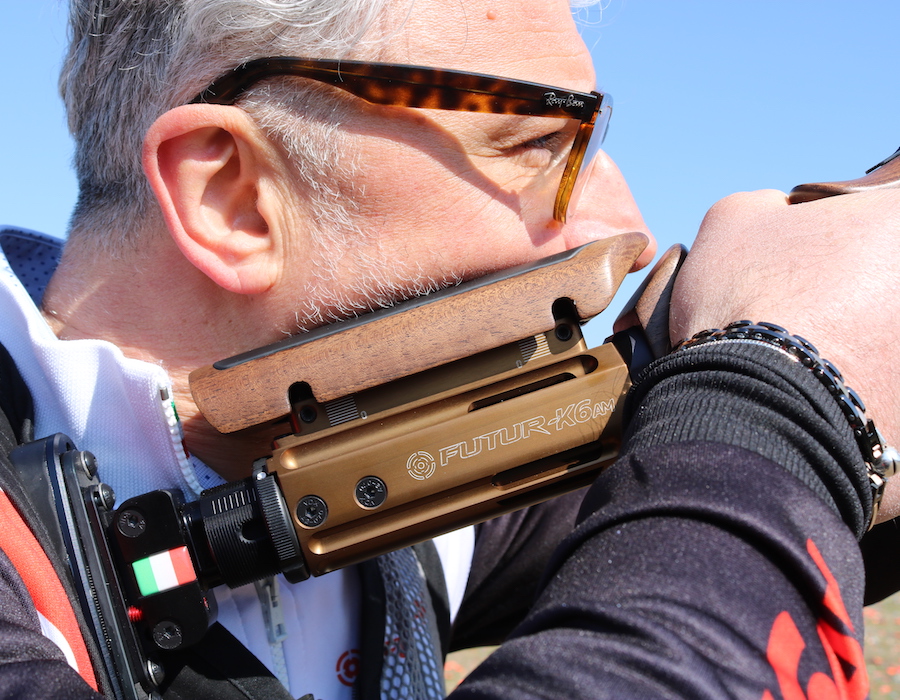In 1900, during the second Olympics of the modern era in Paris, the discipline of the Universal Trench was entered for the first time, even if admitted only as an optional sport. As a result, attention towards what will be known as clay pigeon shooting began to increase.
The participation in the international Olympic competition brought so much publicity that the sport quickly began to gain more and more popularity. In the end, 22 editions of the Games have seen shooters as protagonists and, according to estimates, almost five thousand athletes from 150 countries have participated.
Before illustrating the disciplines of clay pigeon shooting, it is important to observe how the Olympics are closely linked to their diffusion as they offer the opportunity to try your hand at it with the best shooters in the world and represent an incentive to get to know the various activities.
Skeet made its debut in 1968, while the presence of the third discipline, double trap, is more recent. Therefore, this showcase has always been essential for encouraging people to approach the practice.
The importance of the network: the birth of the Italian Shooting Federation
An important factor concerns the union of intent; in fact, in Italy shooting began to have approval when the Fitav, the current national federation, was founded in the twentieth century, even if the growth was not immediate due to the lack of suitable establishments.
The first appearances of Italian athletes in the circuit that counts (and the first successes that arrived with them) were a great driving force. The first international title was in 1959, and the first Italian expedition to the Helsinki Olympics was in 1952.
Before the birth of the federation there wasn’t a valid guiding standard for everyone, and the various companies managed themselves independently.
However, in 1926, Ettore Stacchini, a pioneer in this sector, decided to establish a federation (which the following year took the current name), thus allowing Italian shooters to be part of it and, consequently, to increase attendance on the platform.
As the Treccani encyclopedia also reminds us, from the 237 practitioners of 1926, we reached 7685 in May 1936 and, in ten years, we went from 25 companies to 693.
These are exciting numbers, which have led Italy to excel in the international arena. Our medal collection is currently one of the richest on the continents.
We are now entering the heart of this article and will illustrate the disciplines of clay pigeon shooting.

What are the disciplines of clay pigeon shooting
We will pay particular attention to the Olympic disciplines since they are the most well known and practised. To start, it is advisable to present a general overview of the differences between Olympic Trench (or also called Trap), Skeet and Double Trap.
Then there is the branch of the so-called Hunting Course (Sporting Clay), which is increasingly catching on.
If you are a beginner of this sport, we recommend reading a previous article in which we give valuable advice on what to do when you first start shooting.
It should also be emphasised that each discipline has its own specific shotgun so that it is better suited to the various needs of the discipline itself. For this reason, experts, especially at the beginning, suggest a shotgun that is as versatile as possible, to allow you to make 360-degree contact with the sport.
The essential thing is to have a stock compatible with your physicality, favouring correct alignment. For example, our Futur-K6AM stock, with its infinite adjustments, is ideal because you can fine-tune it in various ways. We will now go into detail about the various Olympic disciplines.

Olympic Trench or Trap
In this discipline, you shoot from a straight-shooting line that is fifteen meters behind the pit with the trap, where you alternate.
The shooters find themselves passing through five platforms, each of which is connected to three machines that are set up below the shooting pit. The machines will respectively launch a central plate, one on the right and one on the left with different angles, which refer to specific patterns.
The succession of throws is chosen randomly. Therefore, the shooter does not know the angle at which the target will start. Once positioned with the shotgun and two shots in the barrel, the shooter calls the target and makes the movement to shoot.
The difficulty lies precisely in the release. Although the shooter knows the times (the target is called and is released after the shooter’s signal) the direction must be intercepted, which undergoes some variables both on the horizontal plane (where it can have a 90-degree margin) and the vertical one (with the height from a meter and a half to three and a half meters).
The Olympic Trench was the first discipline at the Shooting Range and is certainly the most practised in Italy. The trap is located inside a pit, hidden from the sight of the shooter. This is precisely what it gets its name from.
In this discipline, there is a tendency to choose a rifle overlaid with barrels that can have a length between 740 and 760 mm, but there are also those who prefer longer lengths.
Skeet
In this specialty, a journey is taken, consisting of eight platforms (three more than Trap), which are located in a semicircle with a radius of 19.20 meters. The traps are at the end: the one on the left is called Pull, the one on the right is Mark. The two machines always throw the clay pigeon in the same way.
Although the shooter knows the direction and height, the difficulty is always having to move, positioning themselves in one of the eight boards of the circuit.
Not only that, the launch time varies, ranging from zero to three seconds from the shooter’s call. The major commitments then concern the confrontation with ever-changing angles, directions and distances.
The shooter must wait for the clay pigeon in the waiting position (without the shotgun in hand) and has only one shot at the plate and two in the barrel.
It is one of the disciplines of clay pigeon shooting of the most recent Olympic institution and has undergone some changes compared to the past. In fact, in America, in the beginning, there were twelve positions. It was called “Around the clock”, referring to the twelve hours of a clock face. It took its new name in 1926 and is a discipline that entered the games in 1968.
For Skeet, too, you opt for an over-and-under shotgun with barrels between 680 and 710 mm and with minimal bottlenecks given the short distance of the targets. Pleats and deviations of calcium are generally neutral.
Double Trap
In this discipline, the shooters continue to alternate on five platforms as in the Olympic Trench, but two small plates are launched simultaneously. The trajectory is fixed, and the shooter has two shots in the barrel to hit them both. The wait is in a non-predetermined position.
Each platform corresponds to three traps, and the throwing order is established at the beginning; the clay pigeons come out progressively.
Therefore, the shooter knows the trajectory and the program chosen for the two targets. The variables in the launch are those of the horizontal plane (which has a radius of 30 degrees) and the height, which can change from three meters to three and a half meters.
Double Trap is the most recent practice, introduced at the Olympics in 1996, and has had international resonance since the nineties. As you can easily guess from the name, it is very similar to Trap, except you must hit two clay pigeons.
Among the techniques used there is a stationary shot to center the first plate, and a second tracking it in motion.
In 2017, there was news that the Double Trap was no longer part of the Olympic competition and in Tokyo 2020 it will be replaced by a team competition in mixed couples, a man and a woman, which will be played in Trap. Double Trap will remain at the World Cup for the moment, but certainly, the Olympic decision will have great resonance, greatly impoverishing this discipline.
Double Trap has undoubtedly had the force, given its spectacular nature, to attract and involve even novices, and even in these competitions, Italy, the undisputed talent of the clay pigeon shooting, has collected medals and successes.

The Sporting Clay (Compak & Sporting Clay)
In this activity, we try to approach the typical methods of hunting practice. Thus, the targets are launched following trajectories that simulate the flight or movement of the various game as much as possible.
The scenario is also very important, which is advisable to be as natural as possible. Furthermore, a lot of movement is required, being a course with variable target motion (for example the “hare” is a target that is thrown at ground level).
The youth sector: your first step on the platform
As confirmed by the same blue champions in several interviews, most people approach this sport as a child, following the passion of a family member.
Surely, there is never an age limit for shooting, but in this part of our article, we want to observe the steps you should take to join the youth sector.
The first thing you should do to be able to practice the various disciplines of clay pigeon shooting is to register with FITAV. As stated: it costs 50 euros, is valid for the whole year and allows access to all shooting fields in Italy. The thing not to be overlooked is that it provides specific insurance coverage. Moreover, the members can participate in all the circuit competitions.
Depending on age, there are two types of membership: in fact, there is a card for educational activities, which can be obtained at the age of six, and the one for practicing federal sporting activity (that is, for participating in competitions), which was raised to thirteen years old in 2007 (in the past you only had to be ten years old).
During the year, preferably during the school year, the federation organises courses on Olympic specialities, trench and skeet, in the various territories, with males and females being subdivided into various federal events according to age groups.

